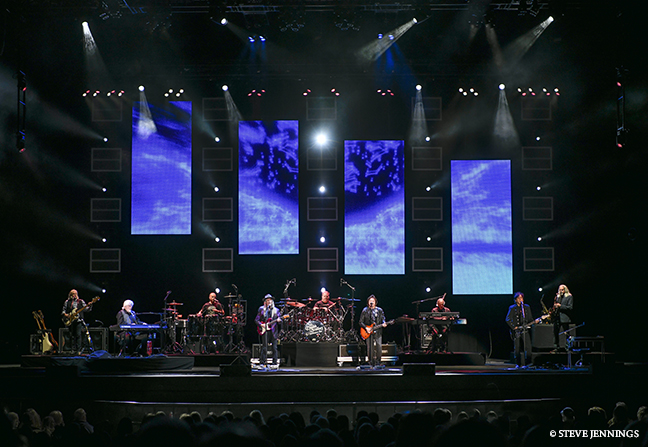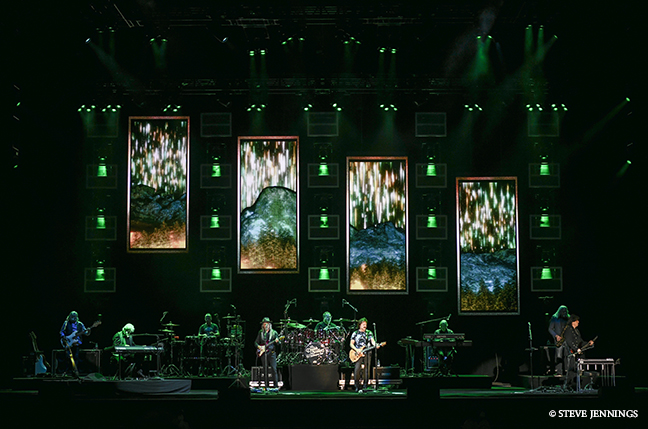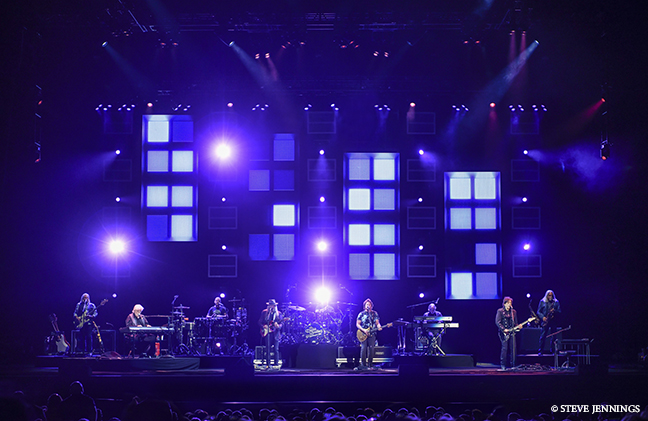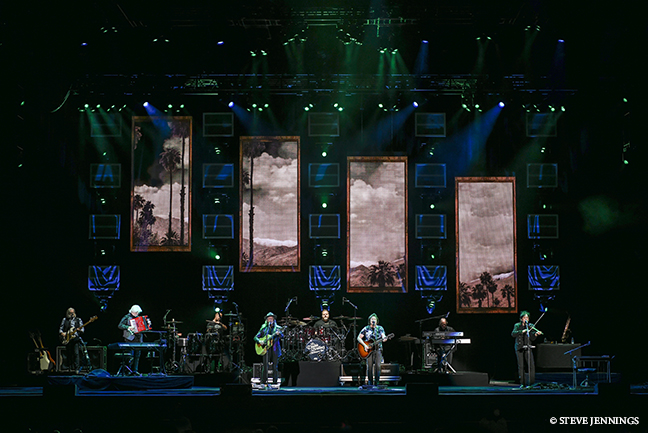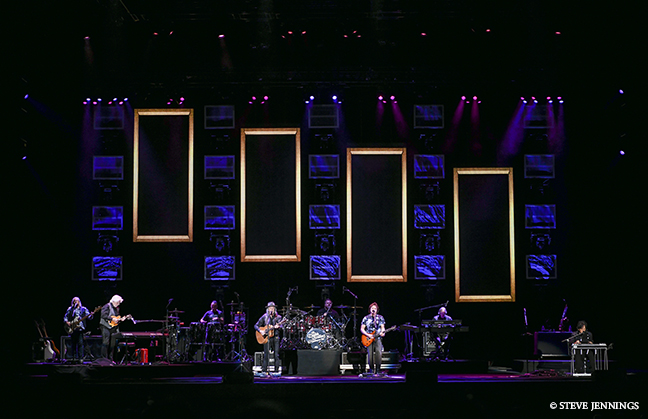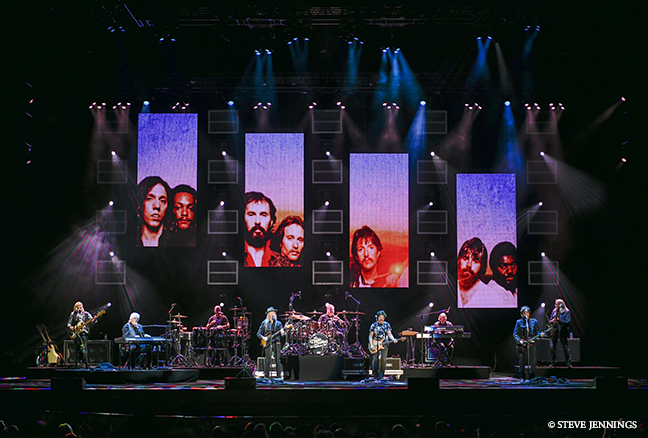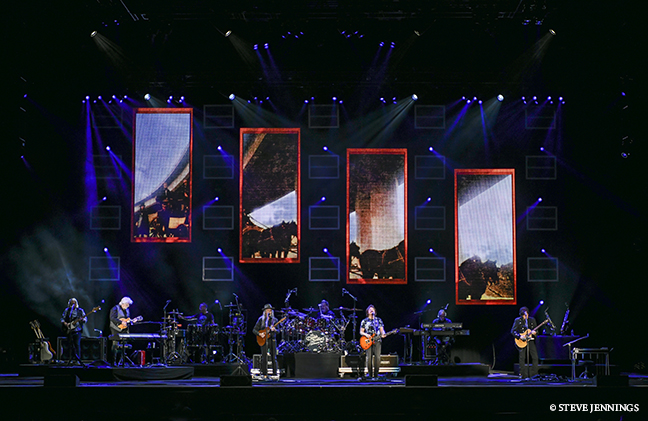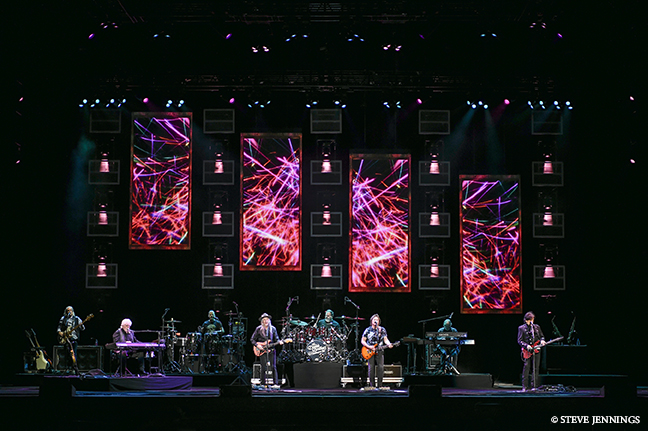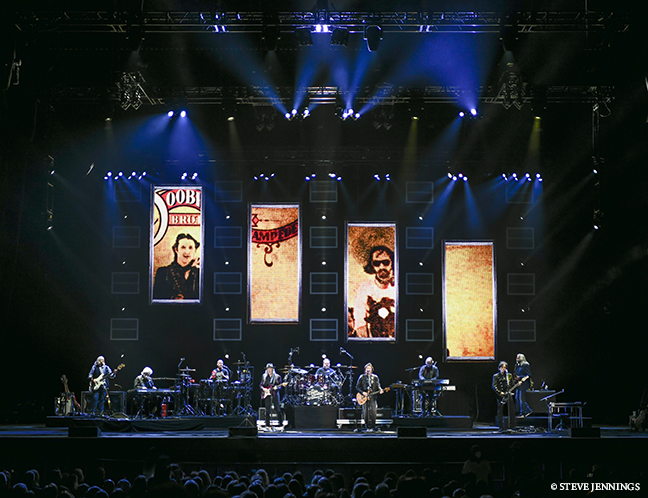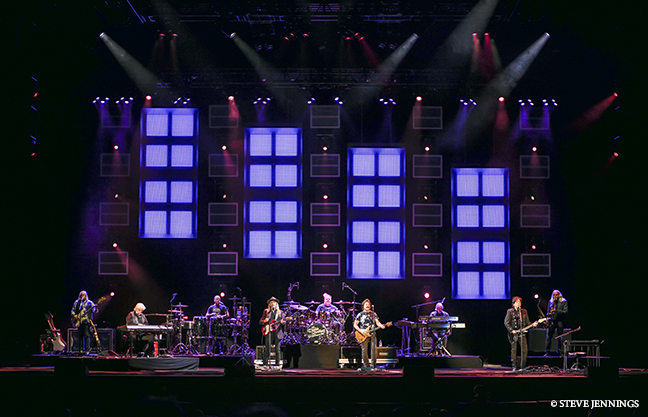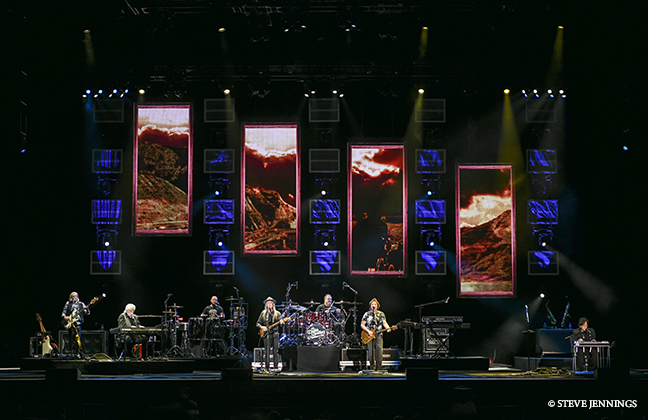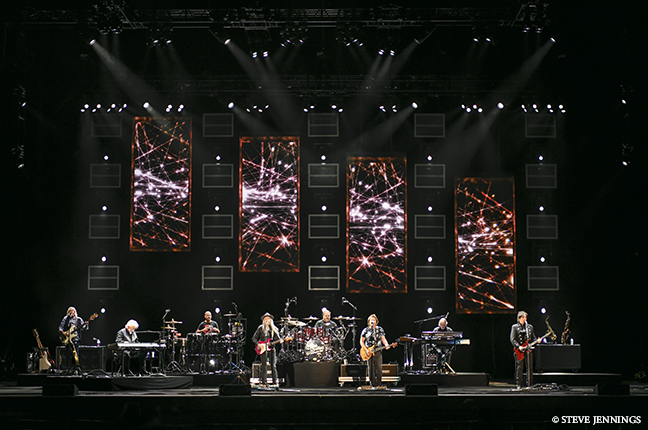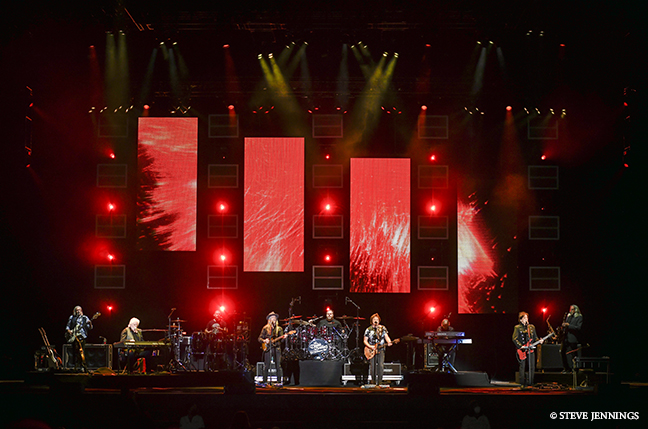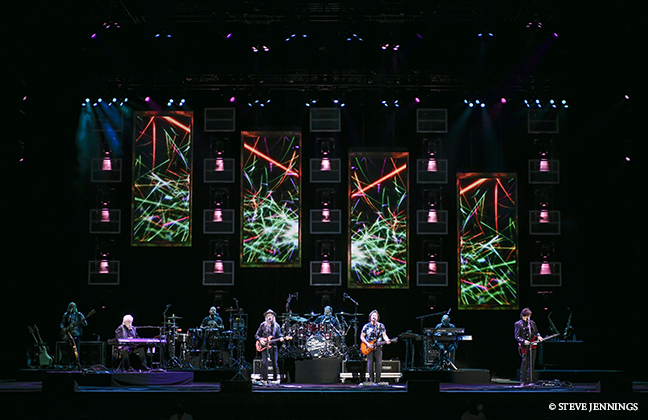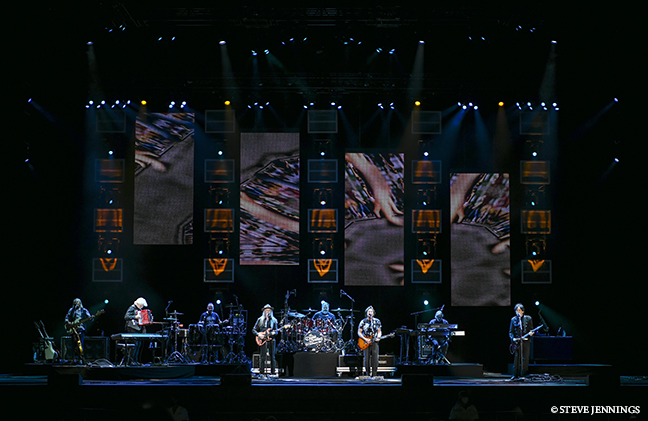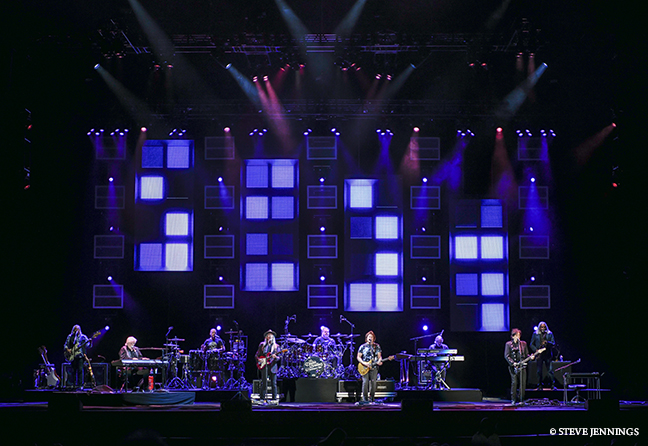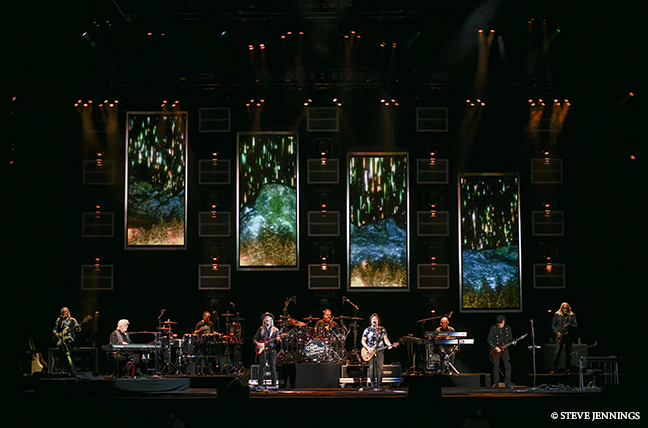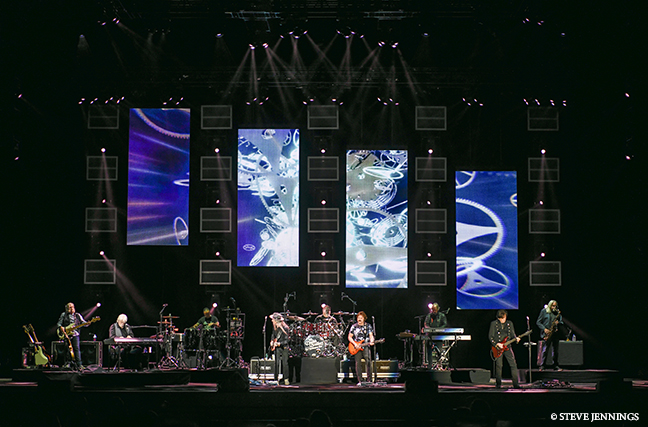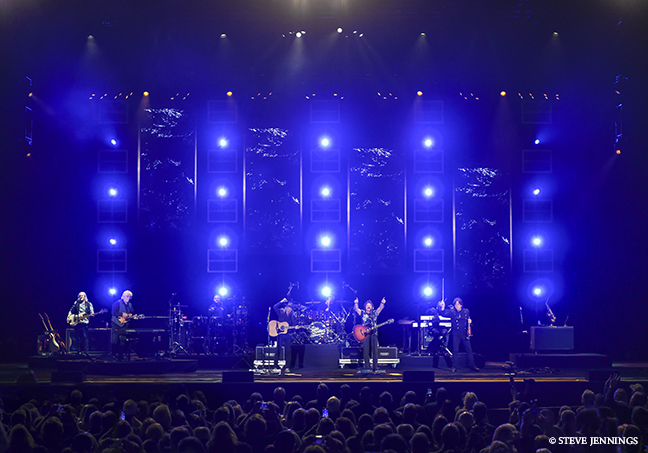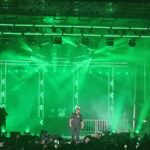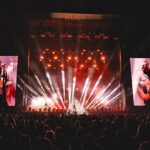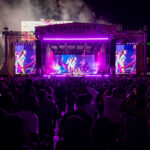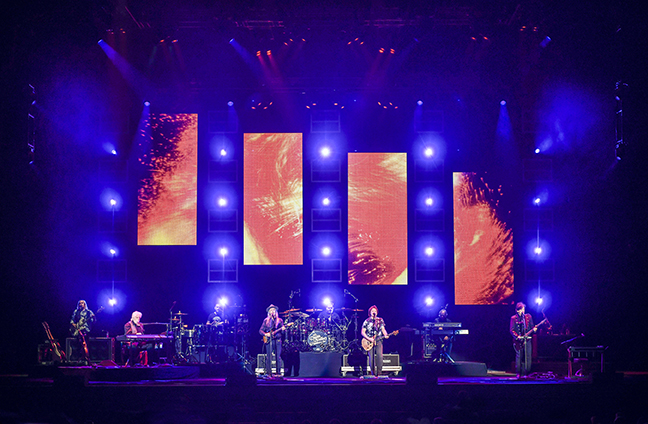
Lighting Company
Solotech
Venue
Various (Tour)
Crew
- Lighting and Design: Darkroom Creative
- Lighting Designers: Nathan Alves, Seth Jackson w/ Steve Owens
- Lighting Director: Steve Owens
- Lighting Programmers: Nathan Alves, Seth Jackson
- Lighting Techs: Adrian McDonald, Steve Schwenke
- Set Designer: Seth Jackson
- Video Co: Solotech
- Video Crew Chief: Ian Bertrand
- Video Tech: Bryan Keyes
- Scenic Panels: Switch/Judi Jewell
- Video Content: Darkroom Creative/Nathan Alves
- Additional Video Content: Creative Lumens/Brent Sandrock
- Solotech Account Rep: Lee Moro
- Tour Manager: Scotty Ross
- Production Manager: Brian “Froggy” Cross
- Staging Co: Gallagher Staging/Joey Gallagher
- Stage Manager: Tyler Habrecht
- Rigger: Dave Schnitker
- Trucking: Special Event Services/Valery Shelley
Gear
Lighting:
- 2 MA Lighting grandMA2 full console
- 17 Ayrton Khamsin
- 92 Robe Spikie
- 4 Elation WW4 LED Blinder
- 2 MDG The One Hazer
Video:
- 4 LED Towers w/SACO S9 9mm tiles (5’11” x 13’2”)
- 1 disguise 4×4 PRO media server w/Notch
Tour Details
The band has been touring and performing a 2.5-hour set of hits and fan favorites with original band members Pat Simmons, Tom Johnston, longtime member John McVie and special guest Michael McDonald.
Designer Insights by Steve Jennings:
PLSN caught The Doobie Brothers 50th Anniversary Tour. Partners Nathan Alves and Seth Jackson of the Creative Darkroom were brought in as the lighting designers and programmers, with Steve Owens as lighting director and assistant designer for the tour. The band play a two and a half hour set of hits and fan favorites with original band members Pat Simmons, Tom Johnston, longtime member John McVie and special guest Michael McDonald.
Seth Jackson
Lighting/Set Designer
Creative Darkroom
There was quite the “blind pitch” process for this tour, says Jackson. Later on, he found out that nearly everyone pitching was a friend. “How we got chosen is a bit of an unknown. I was told at the time that there was ‘something in the emotion’ of the renderings that the band were drawn to. We were given no parameters, and just took our best shot. Of course, then the pandemic hit and everything went quiet for quite some time. We got the scenic elements built and then crossed our fingers.”
The band’s manager, Karim Karmi, calls it constructivist. “It was designed to give us an environment to frame the band and let it morph through lighting and video to paint a 50-year picture. We were symmetric in the shape of the lighting rig and asymmetric in the panels and the screens. The band layout was based on choices the band made and how they wanted to play together. We kept everyone low and tight so they could all see and interact with each other. The lighting rig was designed to mimic the PAR rigs of the 1970s and 80s, but with a high tech twist. We used 92 Spikies in groupings of four and six so we could do big PAR can looks, but with the automation we still had tremendous flexibility.”
Jackson started with an MA Command wing and grandMA3d at home about a month out to get things laid in. Alves and Jackson spent a day at Solotech getting the real-world parameters correct, and then they had four days of programming and four full days of rehearsals with the band. The last two is where Steve Owens came into the mix. “We loaded up the spare console with manual parameters so he would add the ‘in the moment’ feel to the show. He was then our guide through these rather complicated songs (not to mention in a two and a half hour show there’s 30-plus songs to program). There was a lot of ‘I can hit that manually if you put that part in the cue’ and so on. In addition, we were having a good time making this legacy show into a ‘lighting legacy’ show. We kept coming up with cue structures that would be a hat tip to the people that led that charge in the 70s/80s. You would often hear things like ‘Do a [Marc] Brickman thing here’ or ‘that is totally a [Jeff] Ravitz cue’ or ‘that is such a [Steve] Cohen timing trick.’ It gave us a lot of laughs and kept us from falling into our own traditional cueing styles, creating a much more interesting and varied show.”
Switch was chosen for the scenic panels due to the pandemic. “We wanted to get the set built (not knowing at that point it would be over a year before we started) because we all figured by June 2020 we’d be rolling. Switch is a St. Louis based company (where I’m based) so I was able to drop in during the build, do lighting tests, and see everything while the world was shut down. Solotech came out of us wanting a full service company. Lee Moro was able to incorporate all of the lighting, video and rigging into one package. It also meant we could travel with less crew as the departments all shared a common company. Post Covid, this became a huge point as gear and people were at a premium. Since we weren’t touring cameras, incorporating the video with the lighting just made sense. Gallagher Staging was great as always. “Froggy” (Brian Cross), our production manager, was able to coordinate all of our rental stock quickly and since we were rehearsing in LA it made it easy to get everything, try it out, and make adjustments seamlessly. This tour has a lot of history going on. I think it’s a unique experience to work on this one. Everyone out here is a legend. Karim, Scotty Ross, Froggy, Steve Owens, all the production crew, you couldn’t fit the number of years, tours and miles wrapped up in these guys. Then you wrap it around this band and you’ve got a crack outfit of seasoned pros who make every day just a blast to come to work.”
More photos by Steve Jennings:
